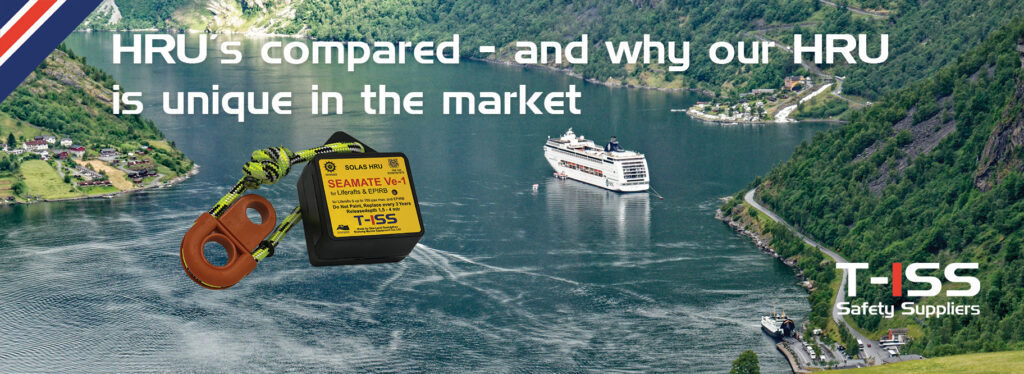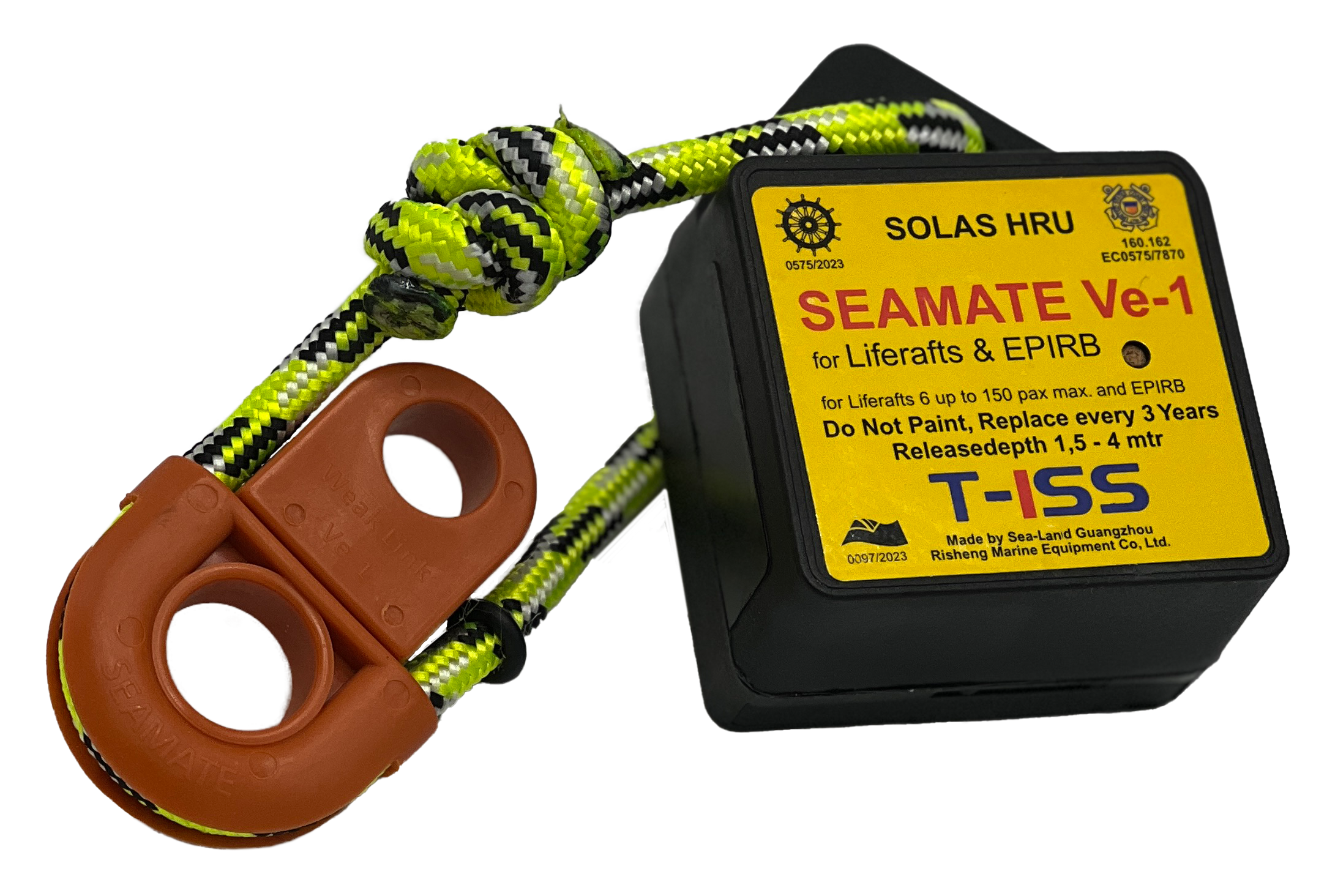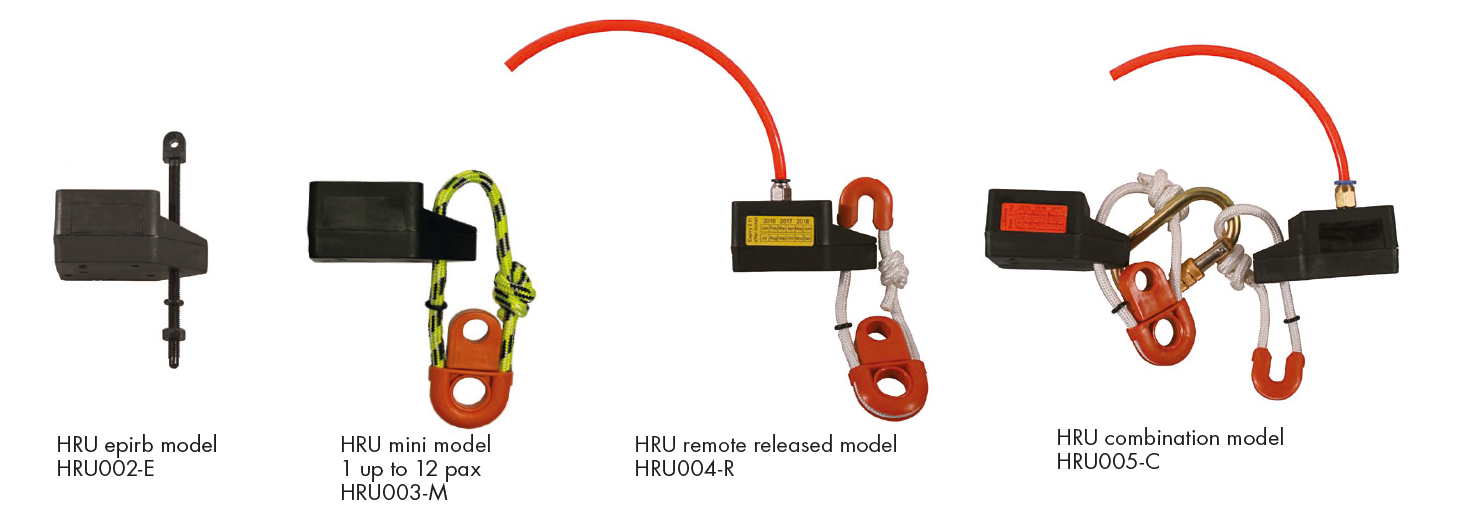Posted by Nicky Smol on May 27, 2024 in Other news

In the vast and unpredictable world of safety at sea, quality maritime safety products are crucial. One device that too often goes unnoticed but plays a critical role in maritime safety is the Hydrostatic Release Unit (HRU). We at T-ISS are excited to discuss our T-ISS SeaMate Ve-1 HRU, a model that has significant benefits compared to others. With its unique features and reliable performance, it could very well save your life one day.
Hydrostatic Release Units (HRU’s) are designed to automatically release life rafts and EPIRBs (Emergency Position Indicating Radio Beacons) when a vessel sinks. This automatic functionality is particularly crucial in severe maritime accidents where manual intervention may be hindered or impossible. When a vessel starts to sink, the HRU ensures that the necessary safety devices are released into the water without the need for human action, increasing the chances of survival for passengers and crew.
Moreover, HRUs help vessels comply with international maritime safety regulations, including those set by the IMO and SOLAS Convention. These regulations mandate the use of such devices to uphold high safety standards across all maritime operations, making HRUs essential components on many ships and vessels.
The T-ISS SeaMate Ve-1 has an innovative design that increases reliability significantly. Compared to other HRU’s, it has several advantages that we would like to tell you about.
The T-ISS SeaMate Ve-1 hydrostatic release unit (HRU) is designed to work in conjunction with devices like Emergency Position Indicating Radio Beacons (EPIRBs). The HRU automatically releases EPIRBs in the event of a sinking ship, ensuring they can float to the surface and start transmitting an emergency signal. This automatic activation is critical during emergencies where manual deployment might not be possible. This integration maximizes the chances of a timely rescue, thereby increasing safety for vessel occupants.
The innovation behind the T-ISS SeaMate Ve-1 HRU is not just in its functionality. Our HRU is engineered to function reliably across all kinds of environmental conditions, ensuring its operability in extreme heat and cold.

The robustness of this device makes sure it can withstand all weather conditions, making it suitable for a diverse range of maritime vessels.
Another thing that makes our Hydrostatic Release Unit different from others, is the fact that the T-ISS SeaMate Ve-1 HRU comes with a three year lifespan instead of two, which is common in other HRU’s. This will not only save operational costs, but contributes to a reduction in environmental impact by decreasing waste and the frequency of replacements.
The T-ISS SeaMate Ve-1 hydrostatic release unit (HRU) operates based on water pressure to automatically release life rafts and Emergency Position Indicating Radio Beacons (EPIRBs) when a vessel sinks. Here’s a breakdown of how it works:
Hydrostatic Release Units (HRUs), such as the T-ISS SeaMate Ve-1, are designed to activate at a depth of approximately 4 meters (about 13 feet) underwater. This activation depth is standard across the industry and ensures that the unit responds to the water pressure as a sinking vessel descends. The reliable activation at this depth allows for the timely release of life rafts or Emergency Position Indicating Radio Beacons (EPIRBs), which are crucial for the survival and rescue of the crew and passengers during maritime emergencies.
At T-ISS, you can choose from five different HRU models, each with its own, unique application. We offer a basic model for 6 to 150 pax, a basic ‘mini’ model for 1 to 12 pax, an EPIRB model, a remote release model and a combination model.

Not sure what kind of HRU is best for you? Chat with us! We’d love to help you out.
We can also supply you with various hooks that are suitable for our HRU-models. These hooks are made out of seawater resistant SS316 Stainless Steel. They have a breaking strength that complies with the ISO regulations ISO6892. All hooks are packed in sets of 10 pieces.
Our Hydrostatic Release Unit is in compliance with ISO 15734 and has the following approvals:
If you would like to download the certificates and datasheets related to this product, please click here to visit our Downloads page.
Helmkamp 32-34
7091HR Dinxperlo
The Netherlands
Mail: sales@t-iss.com
Tel: +31 (0) 315 656060
Fax: +31 (0) 315 656063
